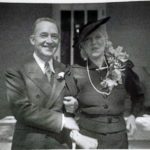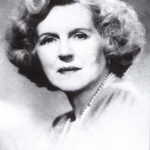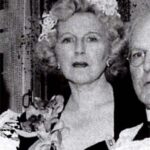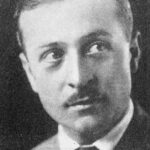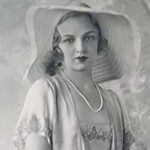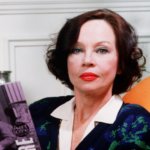It would be impossible to fully recount the work of Helen Bonfils at the Historic Elitch Theatre in one short post. From her first acting role in Men in White (1934), to her years as a producer at the theatre, Bonfils is arguably the second most important woman in the 125-year success of the theatre. (Second only to Mary Elitch! And Haila Stoddard is probably #3.)
While she got her start acting at the Elitch Theatre, Bonfils’ influence on theatre in Denver extended far beyond.
She was one of two daughters of The Denver Post co-founder Frederick Bonfils and she would eventually be President of the Board for the Post.
Her philanthropy led to the establishment of the Bonfils Memorial Theater (later the Lowenstein Theater) and eventually the Denver Center for the Performing Arts.
Helen Bonfils made her first appearance at Elitch Theatre [in 1934] in a bit part in Sidney Kingsley‘s Pulitzer Prize play Men in White. She was born on November 26,1889, in Peekskill, New York, the youngest daughter of Frederick Bonfils. The Bonfils family came to Denver when Helen was six years old and established itself in a brick home at 939 Corona Street. Frederick Bonfils was a shrewd businessman and became one of the founders of the Denver Post. Helen attended St. Mary’s Academy and Denver’s Wolcott School for girls, where all the best families of Denver sent their daughters. Helen then attended the Brownell School, a finishing school in New York.
From an early age, Helen Bonfils’ great love was the theater. She often attended matinee performances with her grandmother and mother at the Tabor Grand and at Elitch Theatre. She appeared in many amateur productions with the Denver Civic Theatre Company. As her acting skills matured, she wondered whether she could act within the professional ranks of the theater. However, since her father was opposed to Helen’s desire to become a professional actress, she did not begin her work in the theater until after his death in 1933. In 1934, she set off to audition at Elitch Theatre. To her delight, director Addison Pitt selected her from among a dozen hopefuls to perform for the season.
She wasn’t young, she wasn’t gorgeous, but Pitt obviously thought he saw in her the talent of a character actress. When he referred to her as “Miss Barton,” Helen corrected him. She was actually Helen Bonfils, she explained. She had used her mother’s maiden name to audition because she didn’t intend to fail as a Bonfils.
Helen was forty-three when she made her first appearance on stage that summer in the part of an Italian woman in Men in White. She wasn’t bad, as it turned out. Much later, her friend Edwin Levy of the drama department of the University of Denver (and sometimes-director of the Denver Civic Theatre) claimed that Helen was one of the most popular actors to appear at the summer theater over a period of fifteen years. He praised her performances and wrote that she had a “spectacular, versatile flair for bringing vivid characterization” to the secondary parts she played, such as Addie in The Little Foxes.
She played ‘walk-on’ roles during the 1934 and 1935 seasons before becoming a regular member of the company in 1936. Although she usually played various relatively minor roles, she also appeared, on occasion, in a major role, such as Adeline in Whiteoaks (1939) and Fanny Cavendish in The Royal Family (1941).
[Borrillo, Theodore A. Denver’s Historic Elitch Theatre: A nostalgic journey, 2012. pp. 174-175. ISBN 978-0-9744331-4-1. OCLC 823177622.]
Seasons at the Theatre
Productions/Roles:
- TOO MANY to list…but we’ll get them added soon!
Notable Roles, Awards, and Other Work:
- Helen won the 1971 Tony Award for Best Play — and another for Best Producer — for the Broadway production of Sleuth.
